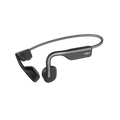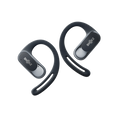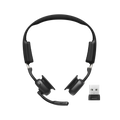Creative business strategy generates more with less
Whenever I’m honored with the opportunity to author an article for this column, I reflect on my 30 years in the accessory business to try to come up with a topic that is interesting, relevant, and insightful enough to add value to your business. In this case, I settled on sharing a strategy I’ve used many times in my business life to add revenue to the startups I’ve worked with: repurposing. While repurposing isn’t necessarily a novel concept, I’ve found that many businesses don’t consider it as a sales strategy or as an innovative product management tool. But that’s where I march to a different beat. AfterShokz bone conduction headphones have retargeted existing technology, repositioned it, and filled a new consumer need with repurposed tools.
I’ve always viewed repurposing as a business strategy. The key is being able to step out of your comfort zone just enough to identify ideas and opportunities, in product development, as well as in marketing to and selling into ancillary markets. In that way, repurposing truly becomes a form of innovation. At AfterShokz, we strategically repurposed the core bone conduction technology in tactical military headphones to create our successful bone conduction headphones. While repurposing isn’t restricted to startups, it has helped in creating line extensions when funds are limited to support a full-blown product development project or the investment in inventory. This holds true whether you’re manufacturing from scratch or sourcing from an OEM/ODM.

There are many definitions of repurposing, from recycling existing materials to form new products, to taking an existing technology and enhancing it to create a new product, to simply using something as it is but marketing it in a new channel. While there are several variations to the theme, the important thing is to make the investigation of any opportunities to repurpose a regular part of your business and product management strategy. Many products, especially accessories, can solve more than one kind of problem for more than one type of customer. Here are some examples:
- A company reimagined the traditional video camera when one executive strapped one to his wrist while surfing. Their repurpose of the long-in-the-tooth video camera created a multi-million dollar business and a new category of consumer electronics in the process.
- Many companies convert commercial products into consumer products by changing simple cosmetics, from an industrial look to something more apt to be found at home.
- Companies have found success in taking an existing product in a limited SKU lineup and making a package change (and maybe just a few aesthetic tweaks) so that the same product can be marketed to a new set of consumers and be presented to different buyers/departments, across brick-and-mortar and online.
I’ve had the most experience with this last option and have found this strategy to be very successful. Let me illustrate.
I was working with a company with only one SKU. As many of you know, it’s very difficult to get one SKU placed at retail (and this was almost 20 years ago when Internet retailing was pre-infancy). While the product was quality and was generating sales, it wasn’t until I put this same item in a different package and gave it a different name that things really took off. I was able to create five different SKUs out of a single product. That meant I could present the product to five different buyers, secure retail space in five different departments and generate a revenue stream that, while not five times the size, was certainly more than triple the sales created when the lineup included just one SKU. It was a win-win strategy that resulted in more revenue to reinvest into the business and the development of more products to add to the overall financial health of the business.
So what’s involved in the process? Not all products lend themselves to being repurposed in this way, so how can someone know if he’s sitting on one that is? Affirmative answers to this series of questions can be used as a guide:
- Does the product address needs in multiple channels?
- Can the product be repurposed without wholesale changes to function and design?
- Does the market size for the repurposed product represent a meaningful revenue generator to justify the repurpose marketing effort?
- Does the repurposed product bring something new to the category where it will be marketed?
- Can the message of the repurposed product be clearly communicated to the targeted consumer?
This isn’t meant to be a road map on how to repurpose. My goal is to stimulate thinking on how to expand your current accessory lineup through creative marketing, rather than a pure-play product development process. In today’s economic environment, the ability to make more from less should be a welcome opportunity as a growth stimulator.
This article was authored by Bruce Borenstein and initially published on Dealerscope.com.











